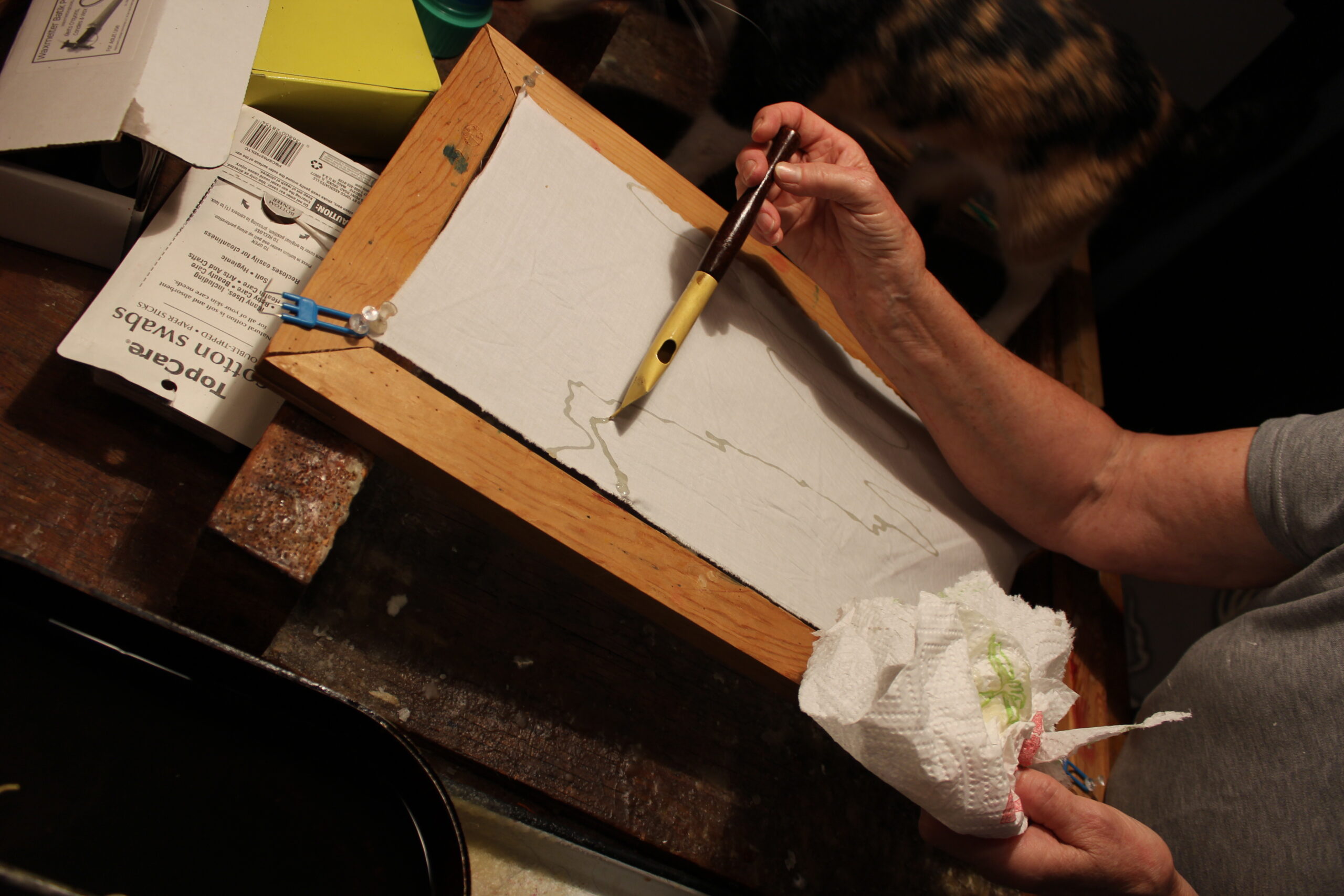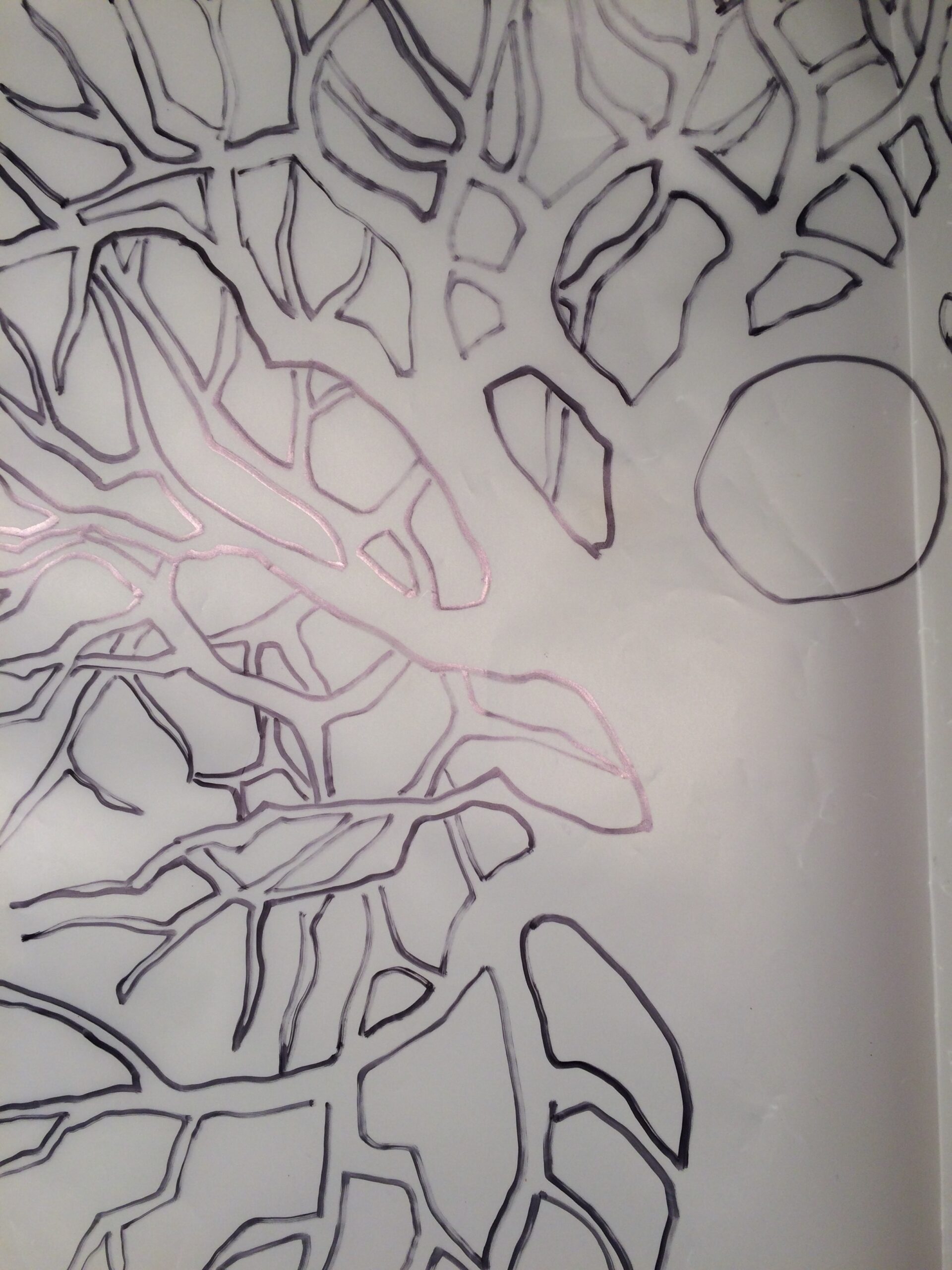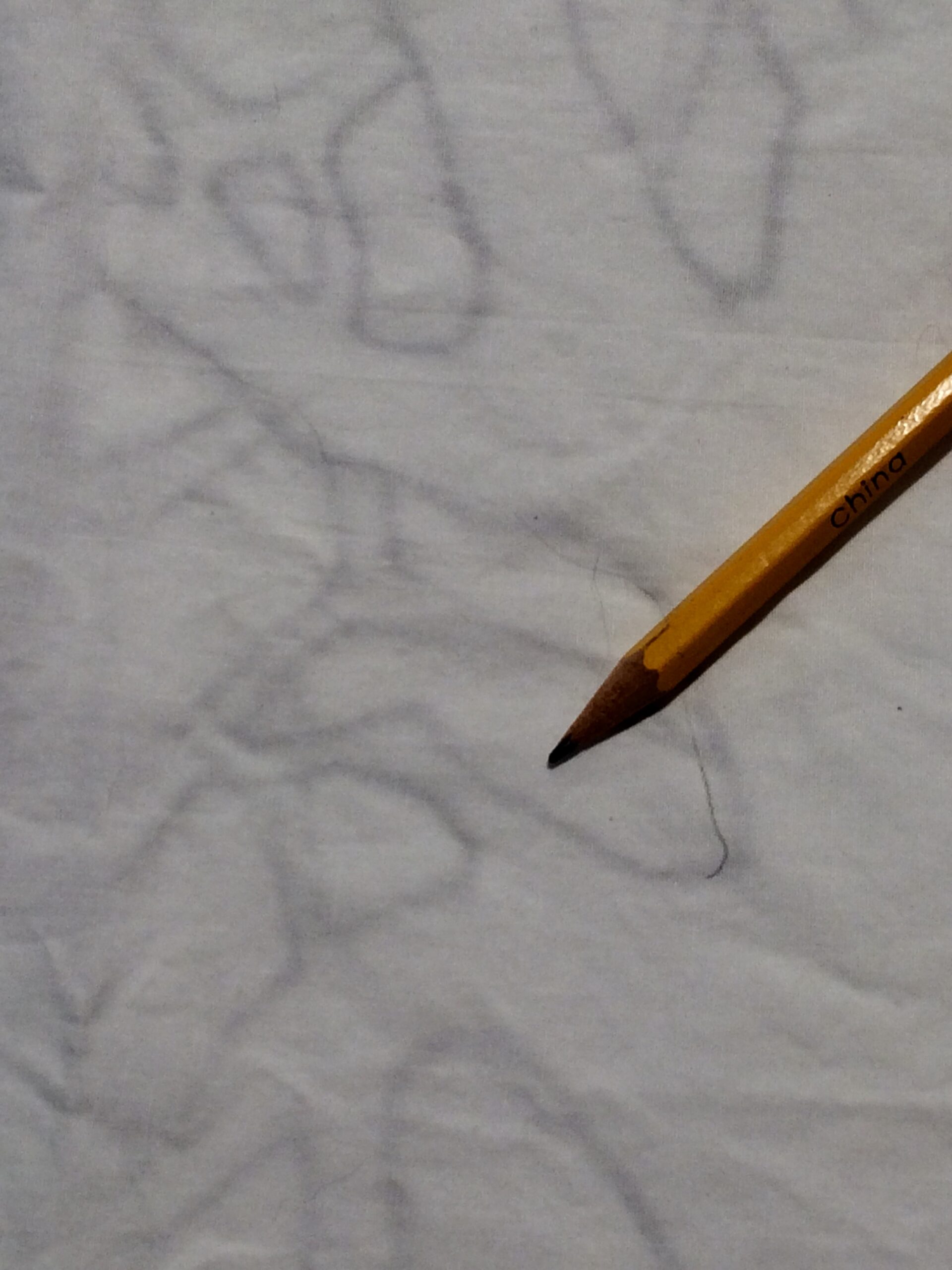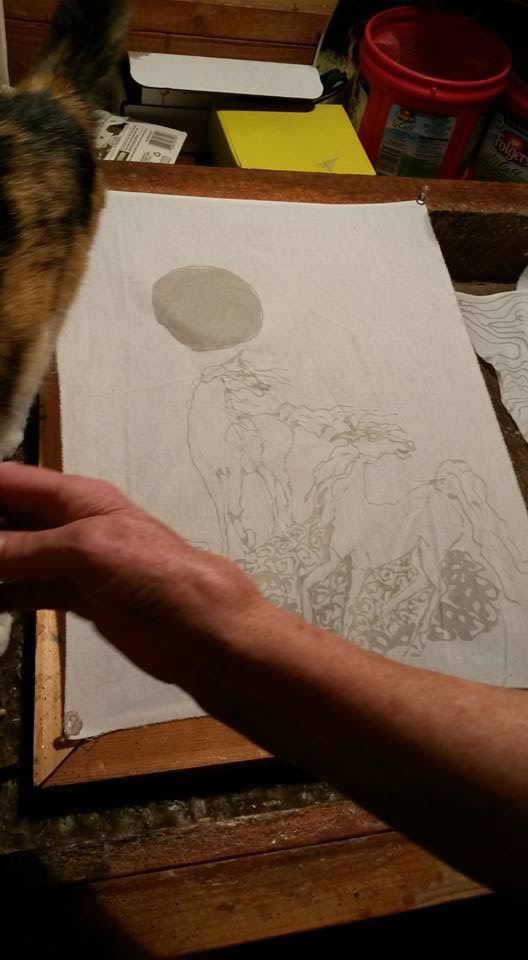Many people ask me where my inspiration comes, and how do I plan my designs for my batik artwork. I have two different ways of approaching a batik. Some of my batiks are done mostly with the tjanting tool, which is a brass or copper bowl with a spout. The tjanting is a very ancient tool and makes lines of wax. The wax flows out very quickly and I always need to have a cloth or a paper towel nearby to catch the drops that I don’t want to fall on the fabric until I place it down and start to draw.
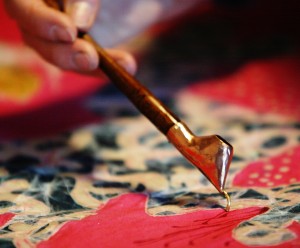
Wax added to the frog’s leg. Photo by Derek Pruitt of the Post Star.
The tjanting is ideal for making spontaneous flowing lines. I do plan the batik with a light sketch, but the tjanting tool has little to do with the lines that a pencil will make. It needs its own space, and defies being held to rigid forms. I especially like to do horses with the tjanting tool as the manes and tails catch the elements of the wind and breath and movement of the horse. The tjanting creates an image of the spirit of the horse and the movement, and is very ethereal, but the horses are not solid at all. They are part of the wind. I will add many stages of the tjanting lines to build up a batik in many colors of flowing manes and sometimes tails. And you can see some of the progress in the photos that I’ve included here.
- Here is my electric frying pan, set with my tjanting tools and brushes.
- This is a smaller stretching rack, made from canvas stretchers. Very adaptable in size.
- Here I am working on a larger piece, and it’s secured at the bottom and way up high on the top for the extra length.
- Dripping to my heart’s content!
- Here is a sketch for the batik Breath Over Mountain
- Breath Over Mountain
The other type of batik I do can be very detailed and for this type of batik, I do have to make a sketch ahead of time. I will highlight the sketch in a black marker and then I will trace it onto the white cotton. After that, it is most usually by using a brush that I draw the wax into the design. The most critical of times to use this method is when I am doing batik of trees and their branches.
- The drawing I will trace from
- The fabric resting on the black image with me doing the pencil work to trace it
When this type of batik happens, I need to paint the sky around the tree branches with wax. So I am painting the negative space, and the branches are left behind unpainted to accept the dye. This is one of the aspects of batik that the printmaking process I did in the past really helps. So you can see in the pictures here how I trace the branches out on the fabric and transfer them to the cotton and am then ready to paint in the empty areas around the branches with plain white wax. The most famous of the batik with this design are Unicorns Rise from Dreams, and also Horse Sleeps Below Tree of Rebirth. It was essential that I plan these out very carefully. Some of my other batik have parts of it planned to detail and other parts left for a slow development of the design as the process moves on.
- Unicorns Rise from Dreams
- Horse Sleeping Below Tree of Rebirth
The one thing about the dyes – the blue colors in the fiber reactive dyes used for cotton are the most expensive of the dyes, and I really enjoy blue. However, they are the easiest to bleach away. So very often I will use a blue early and be able to go in with other colors later on which do not bleach away as well. Ironically enough for my fiber reactive dyes on cotton, yellow is very difficult to bleach out, usually. So if you see small areas of blue early on in a batik like in Below it All, blue was the first color dyed in, and then it was bleached and a lot of colors, reds and greens, were added later on.

Below It All
The designs do come to me as I’m working, and there are things that happen with the dye and the wax that will never be recreated. Temperature of the wax is different, it might be paraffin which crackles easily, or beeswax, which seldom crackles, or the softer lines of soy wax can all have an effect. The colors of the dyes are translucent so I normally start with a light shade and build up by wax and dye with the deeper colors as the batik progresses. I may decide partway through that I want to go back with some other lighter colors and I will bleach areas out, and then I will be able to go back in with some of the contrasting colors that without this stage would make a brown.
- The beginning of Hot Summer Breeze
- Hot Summer Breeze completed
But the whole process is a great interaction of what comes out through my hand and what the dyes give me. The dyes themselves are always changing. As you use them, color is pulled out, so your next dye bath out of the same bucket can be different, usually lighter. But that too is affected by the temperature of the dye and how long the fabric is left in the dye bath. So when I finish a batik I feel that the spirits of wax and dyes have helped me to create this. As I iron it out, I enjoy how bright it looks, and it always makes me excited to see the finished design.



